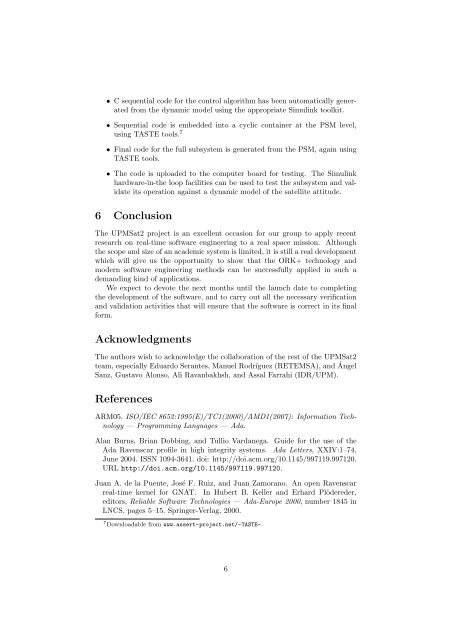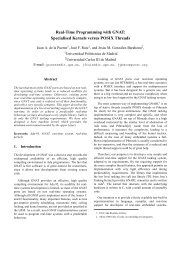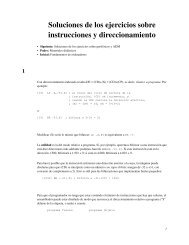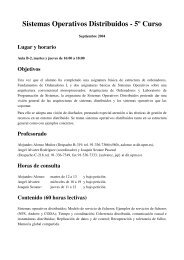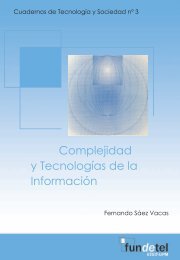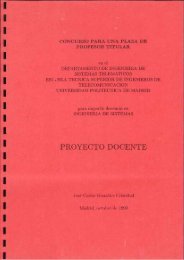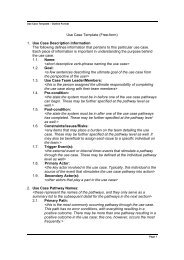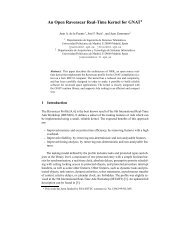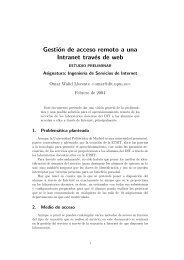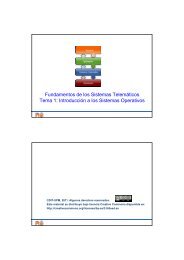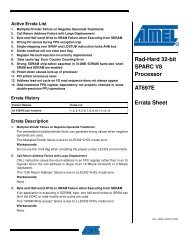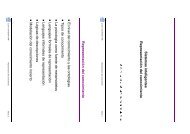A Real-Time Computer Control Platform for an Experimental ... - CTR
A Real-Time Computer Control Platform for an Experimental ... - CTR
A Real-Time Computer Control Platform for an Experimental ... - CTR
Create successful ePaper yourself
Turn your PDF publications into a flip-book with our unique Google optimized e-Paper software.
• C sequential code <strong>for</strong> the control algorithm has been automatically generatedfrom the dynamic model using the appropriate Simulink toolkit.• Sequential code is embedded into a cyclic container at the PSM level,using TASTE tools. 7• Final code <strong>for</strong> the full subsystem is generated from the PSM, again usingTASTE tools.• The code is uploaded to the computer board <strong>for</strong> testing. The Simulinkhardware-in-the loop facilities c<strong>an</strong> be used to test the subsystem <strong>an</strong>d validateits operation against a dynamic model of the satellite attitude.6 ConclusionThe UPMSat2 project is <strong>an</strong> excellent occasion <strong>for</strong> our group to apply recentresearch on real-time software engineering to a real space mission. Althoughthe scope <strong>an</strong>d size of <strong>an</strong> academic system is limited, it is still a real developmentwhich will give us the opportunity to show that the ORK+ technology <strong>an</strong>dmodern software engineering methods c<strong>an</strong> be successfully applied in such adem<strong>an</strong>ding kind of applications.We expect to devote the next months until the launch date to completingthe development of the software, <strong>an</strong>d to carry out all the necessary verification<strong>an</strong>d validation activities that will ensure that the software is correct in its final<strong>for</strong>m.AcknowledgmentsThe authors wish to acknowledge the collaboration of the rest of the UPMSat2team, especially Eduardo Ser<strong>an</strong>tes, M<strong>an</strong>uel Rodríguez (RETEMSA), <strong>an</strong>d ÁngelS<strong>an</strong>z, Gustavo Alonso, Ali Rav<strong>an</strong>bakhsh, <strong>an</strong>d Assal Farrahi (IDR/UPM).ReferencesARM05. ISO/IEC 8652:1995(E)/TC1(2000)/AMD1(2007): In<strong>for</strong>mation Technology— Programming L<strong>an</strong>guages — Ada.Al<strong>an</strong> Burns, Bri<strong>an</strong> Dobbing, <strong>an</strong>d Tullio Vard<strong>an</strong>ega. Guide <strong>for</strong> the use of theAda Ravenscar profile in high integrity systems. Ada Letters, XXIV:1–74,June 2004. ISSN 1094-3641. doi: http://doi.acm.org/10.1145/997119.997120.URL http://doi.acm.org/10.1145/997119.997120.Ju<strong>an</strong> A. de la Puente, José F. Ruiz, <strong>an</strong>d Ju<strong>an</strong> Zamor<strong>an</strong>o. An open Ravenscarreal-time kernel <strong>for</strong> GNAT. In Hubert B. Keller <strong>an</strong>d Erhard Plödereder,editors, Reliable Software Technologies — Ada-Europe 2000, number 1845 inLNCS, pages 5–15. Springer-Verlag, 2000.7 Downloadable from www.assert-project.net/-TASTE-.6


